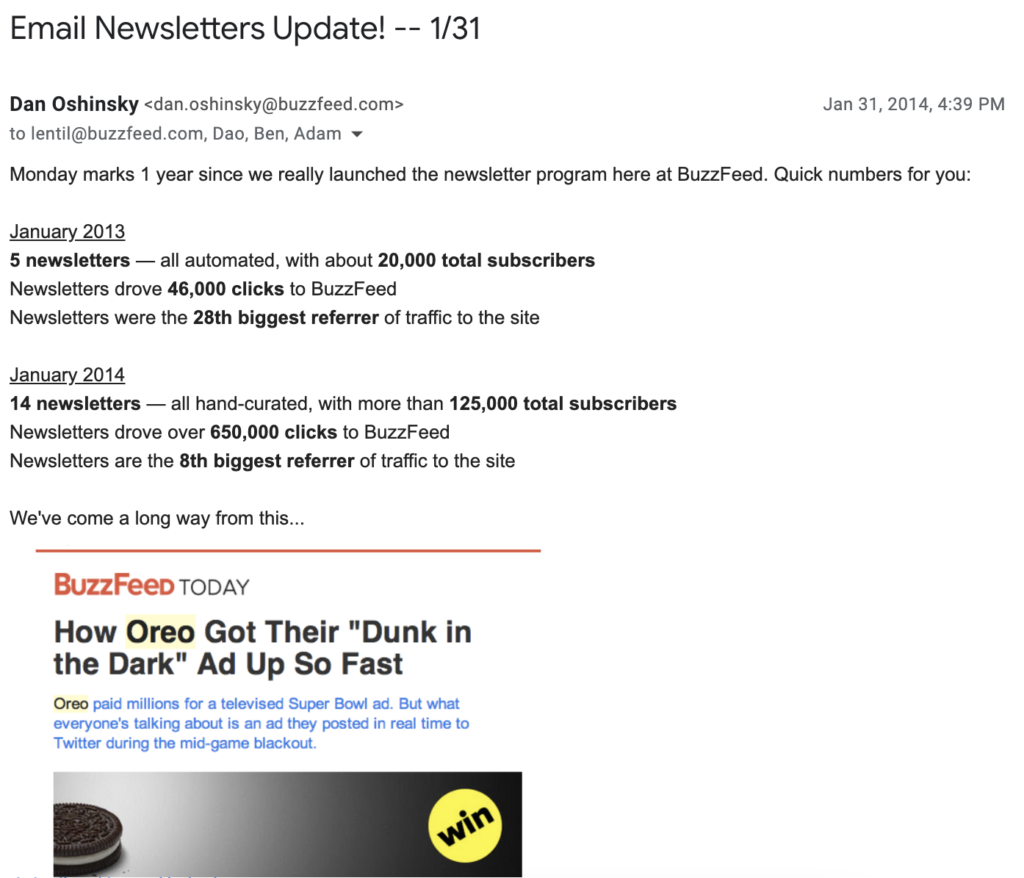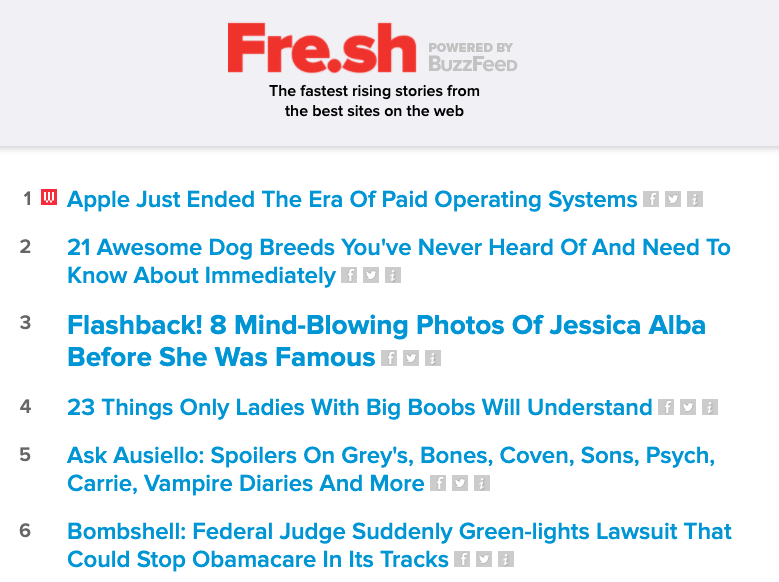A client had a question recently about something I’d worked on at BuzzFeed, so I went back into my email archives to try to find an answer. And what I found, unexpectedly, was this email:

It’s from the end of year 1 of my work at BuzzFeed. It said:
Monday marks 1 year since we really launched the newsletter program here at BuzzFeed. Quick numbers for you:
January 2013
5 newsletters — all automated, with about 20,000 total subscribers
Newsletters drove 46,000 clicks to BuzzFeed
Newsletters were the 28th biggest referrer of traffic to the site
January 2014
14 newsletters — all hand-curated, with more than 125,000 total subscribers
Newsletters drove over 650,000 clicks to BuzzFeed
Newsletters are the 8th biggest referrer of traffic to the site
I’ll be honest: I knew I did a lot of work that year — I just didn’t remember how much work!
Looking back, I know I was motivated to prove that newsletters could be a great tool for BuzzFeed, and I remember working long hours to keep the newsletter strategy moving forward. I was making stuff up as I went along, and I didn’t really have many resources at my disposal. I was lucky to have a few wonderful supporters in my corner who helped me stay on track. But even now, looking back at this email — which I wrote — I’m stunned at those results from year 1.
Did I really do that?
I know I can be dismissive of some of the work I’ve done in the past. I know I’m better at this now than I was a decade ago. I don’t always want to talk about the mistakes or lessons I learned along the way.
But I don’t get the chance to build Inbox Collective without that work I put in ten years ago at BuzzFeed. I’m grateful for that work, and I’m proud of it.






